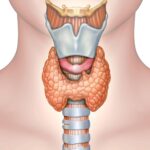- Home
- GYNECOLOGY/OBSTETRICS
- Leiomyoma (Fibroids)

Fibroids are benign tumors that originate from smooth muscle cells of the uterus. They are commonly associated with abnormal uterine bleeding and pain.
Classification
- Subserosal- under the outer surface of the uterus
- Intramural- in the wall of the uterus
- Submucosal- under the uterine lining
- Pedunculated- fibroid is growing on a stalk
Signs and symptoms
-It depends on the number, size, and location of the uterus
- Abdominal pain
- Abnormal uterine bleeding
- Anemia ( severe disease)
- Urinary symptoms,e.g., increased urgency and frequency- due to pressure on surrounding tissues.
- Intestinal compression -in advanced disease
Complications
- Infertility- due to blockage of fallopian tubes
- Postpartum hemorrhage
- Preterm labor
- Malpresentations and malposition of the foetus
- Spontaneous abortion
Diagnosis
-Relevant history accompanied by physical examination
-Pregnancy test- rule out any presence of a fetus
-Imaging
- Ultrasonography- to detect any nonspecific abnormalities of the uterus
- Sonohysterograhy- uses saline infusion
- MRI- most accurate if the above modalities are inconclusive
Differential diagnoses
- Adenomyosis
- Endometriosis
- Leiomyosarcoma
- Pregnancy
Treatment and management
Asymptomatic
-Does not require medical or surgical interventions.
-Patients should be reevaluated once or twice annually
Symptomatic
-Medical– drugs to suppress hormone activity or production
- GnRH agonist-goserelin
- Progestins- medroxyprogesterone
- Antiprogestins- mifepristone (low dose than the one used in the termination of pregnancy)
- Estrogen receptor modulator(selective)- raloxifene
- Tranexamic acid- has antifibrinolytic properties that reduce abnormal bleeding
- Analgesics- NSAIDs
Surgical
Indications
- Rapid enlarging tumor
- Persistent uterine bleeding despite medical interventions
- Infertility and recurrent spontaneous abortions- when pregnancy is desired in the future
- Severe pain
-Myomectomy- done laparoscopically or hysteroscopically
-Hysterectomy- is done when pregnancy is not desired in the future.
-Morcellation- involves cutting the tumor into small pieces and then removing it laparoscopically. It poses risks of disseminating cancerous cells
Other modalities
- Cryotherapy- entails freezing the tumor
- Radiofrequency ablation
- Uterine artery embolization- prevent bleeding alongside causing infarction of the tumor.












